Behind the Scenes at Humongous U.S. Atom Smasher
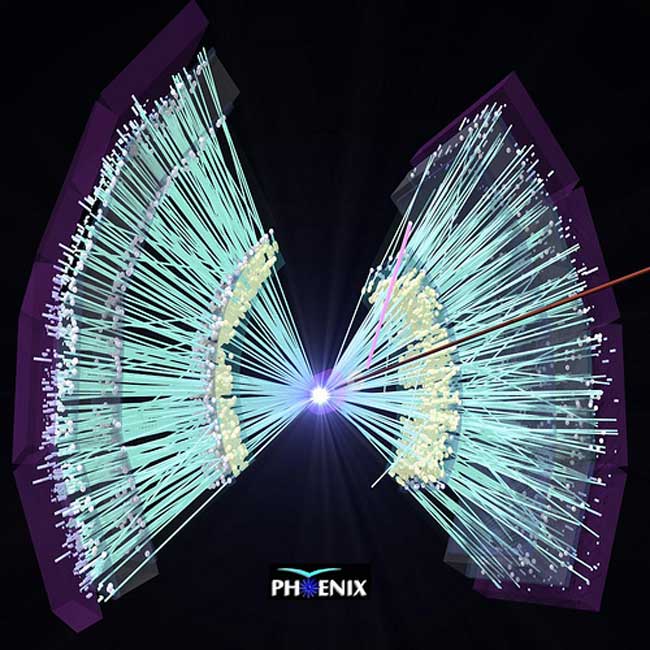
Behind the Scenes at Humongous U.S. Atom Smasher
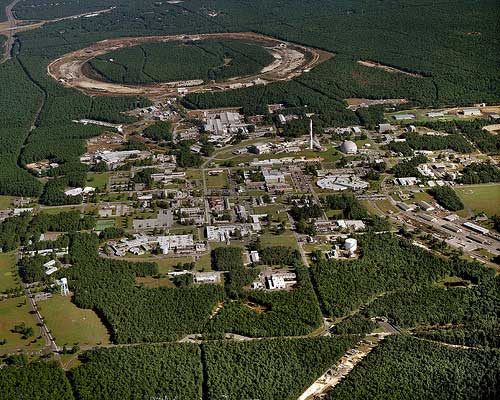
Brookhaven is a 5,265-acre (21-square-km) research facility run by the U.S. Department of Energy. When two particles collide inside RHIC, they produce extreme amounts of energy that can create some of the most exotic particles and forms of matter scientists have ever seen on Earth.
Behind the Scenes at Humongous U.S. Atom Smasher
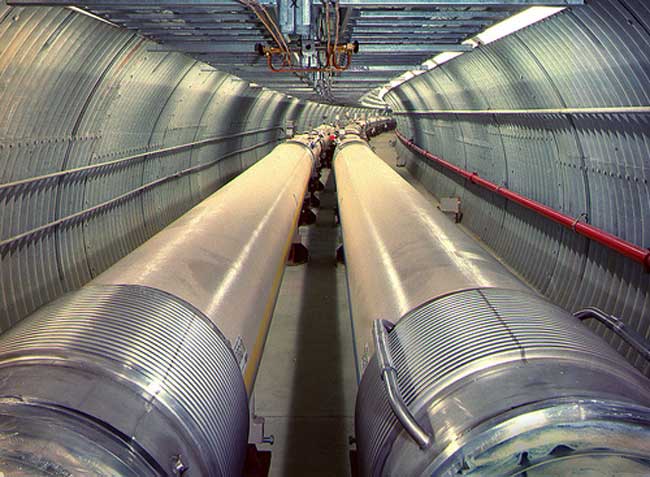
The main tunnel includes two rings - one for particles to run clockwise, and another for counterclockwise particles. The rings are made of superconducting magnets that create powerful magnetic fields to keep the beams of particles on course. At six points along the tunnel, the two rings of particles flying in opposite directions cross and particles collide.
Behind the Scenes at Humongous U.S. Atom Smasher
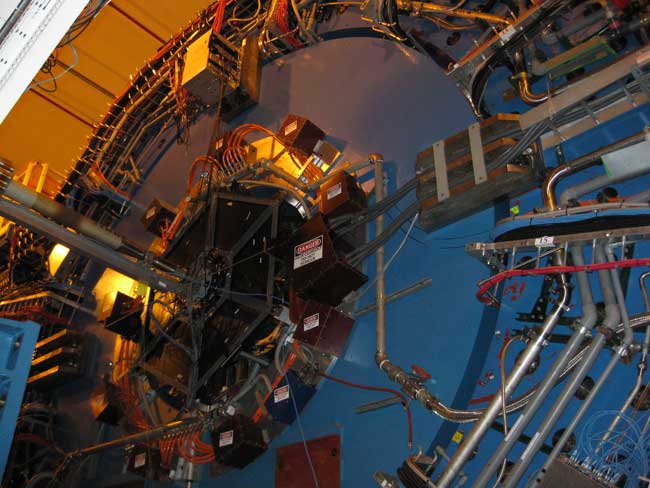
At the collision points scientists have erected massive detectors, such as the Solenoidal Tracker at RHIC (STAR), above, to record the particles that come flying out of the crash. The thin metal pipe on the left-hand side of the image holds an incoming particle beam. The blue cylinder is a large magnet encasing a chamber filled with gas. As particles fly out from the collision in all directions, they knock electrons off of atoms in the gas, creating trails of loose electrons that mark their paths.
Behind the Scenes at Humongous U.S. Atom Smasher
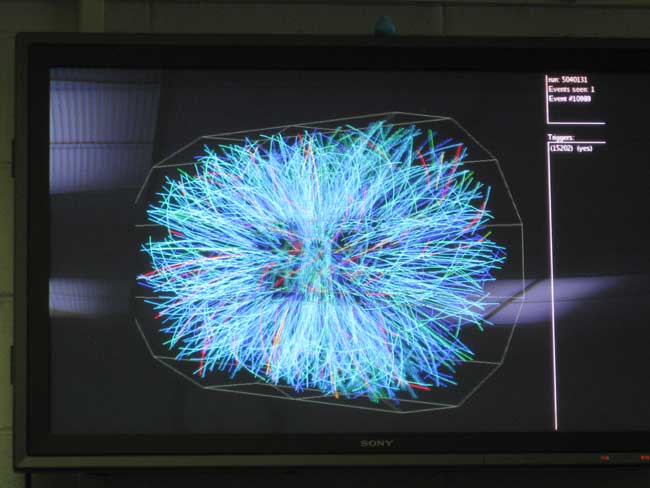
This screen in the STAR control room shows the particle tracks measured from a recent collision. Thousands of particles are created in a crash at RHIC, as the kinetic energy of the particle beams’ motion is transformed into new kinds of matter in the smash. “These particles are E=mc^2 in action,” said Gene Van Buren, a physicist at STAR. The different color tracks indicate particles with different energies.
Behind the Scenes at Humongous U.S. Atom Smasher
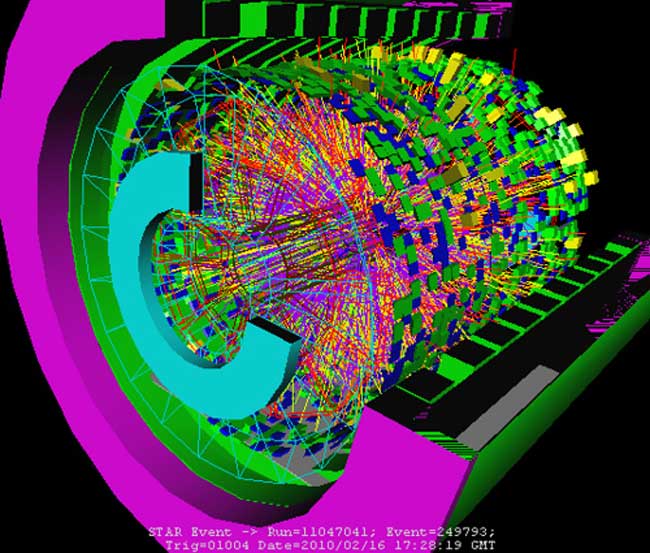
A computer simulation of a collision of two beams of gold nuclei in the STAR detector. The beams travel in opposite directions at nearly the speed of light before colliding. The resulting particles fly in all directions to be measured by the cylinder-shaped detector.
Behind the Scenes at Humongous U.S. Atom Smasher
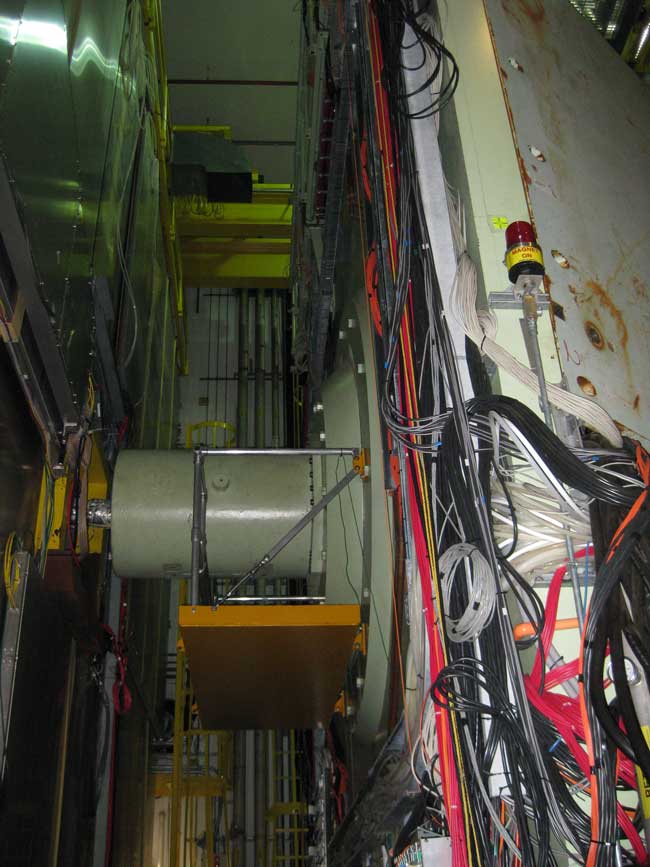
Another detector at RHIC is the Pioneering High-Energy Nuclear Interactions eXperiment (PHENIX). The green tube in the center encloses an incoming particle beam. PHENIX houses concentric layers of detectors, each optimized to recognize different types of particles. PHENIX was involved in the recent discovery of quark-gluon soup, a primordial state of matter where protons and neutrons break down into their constituent parts.
Behind the Scenes at Humongous U.S. Atom Smasher
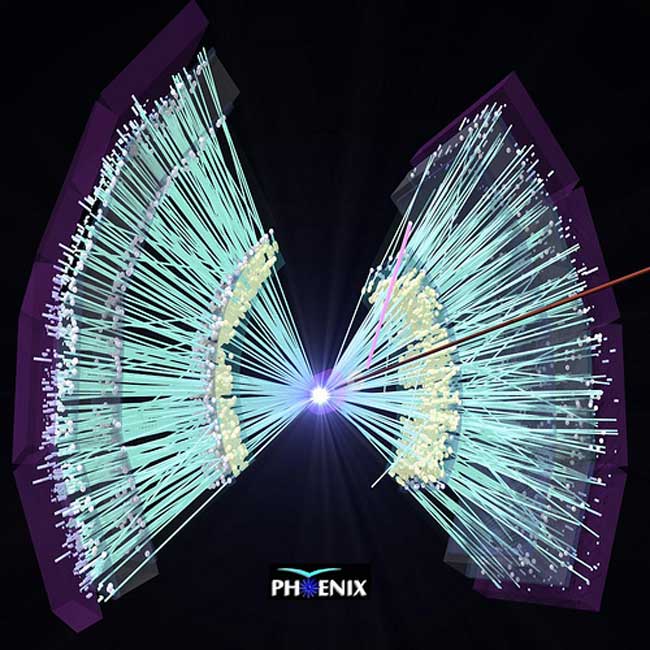
This computer image was generated from data collected at the PHENIX detector. The blue tracks point toward the location of the collisions. The path of the incoming beam is shown in red.
Get the world’s most fascinating discoveries delivered straight to your inbox.
Behind the Scenes at Humongous U.S. Atom Smasher
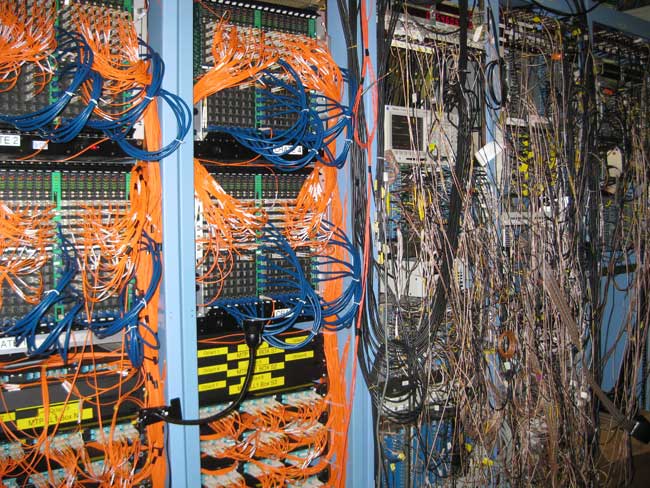
RHIC requires massive amounts of computing power to store and analyze the data from its detectors. Here are just a few stacks of computers processing signals from collisions at PHENIX.
Behind the Scenes at Humongous U.S. Atom Smasher
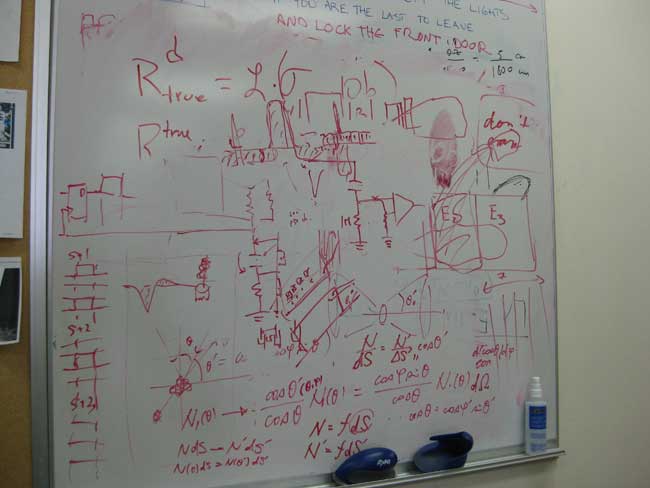
The PHENIX team includes some 450 scientists from 51 institutions in 11 countries. Here, a white board displays some of the researchers’ notes and calculations.
Behind the Scenes at Humongous U.S. Atom Smasher
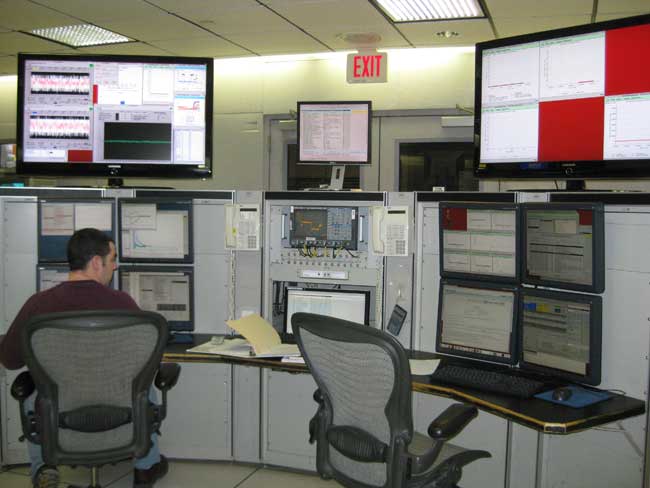
A scientist works on a console at the main RHIC control room. Here researchers start the beams and tell the machine when to aim them for collisions. People here must also monitor safety and make absolutely sure that the beam is not running when people enter the ring - radiation from the accelerating particles could be very dangerous to a person directly exposed.

